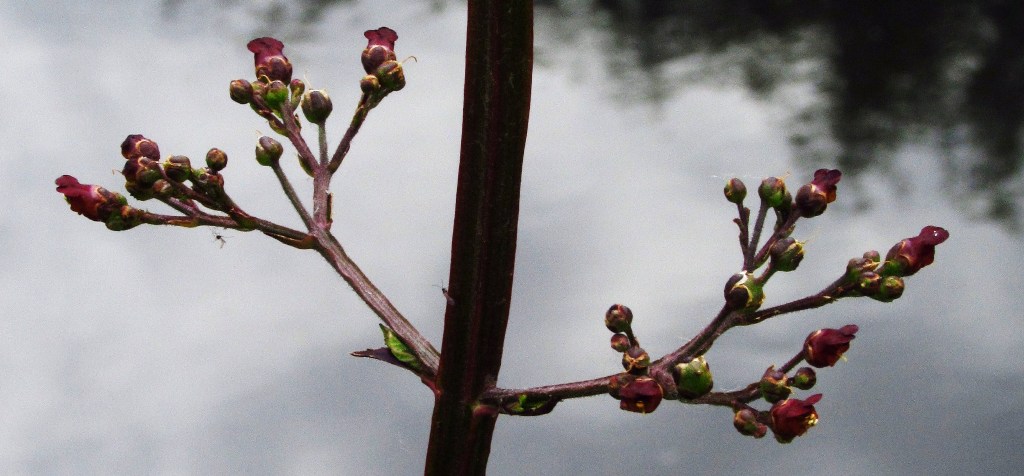The Figworts or Scrophulariacea is a family wich has many introduced ornamental plants, through planting in the garden. It used to be much larger but has been split since the new molecular system of classification (APG III) came into place.

The name Figwort is only just represented by the genus Scrophularia in the B.I..
The individual genera of Scrophulariaceae are all unique in their general appearance. The uses are mainly for wildlife and garden plants, but the Figworts and Mulleins also have medicinal uses which you can read up about on the next page.
It has been split into four additional families:
- Paulowniaceae,
- Phyrtmaceae,
- Calceolariaceae and last
- Veronicaceae.
Other changes are:
- The semi-parasitic Pedicularieae has been moved to the Orobanchaceae family.
- The Buddlejaceae are now amalgamated with the Scrophulariaceae.
Hopefully more about those families in future blogs.
More info and pictures can be found through the links provided. The pictures used in this post are by Mike Poulton (M.P.) of Ecorecord and Rudi Pilsel (R.P.), Derrick Forster, Matt Summers (M.S.) as well as from Wikipedia Common.
If the plants are found in the Flora of Birmingham and the Black Country a FBBC will be added behind the Common name in the contents page below.
Contents:
Verbascum or Mulleins
- V. blattaria or Moth Mullein FBBC
V. virgatum or Twiggy Mullein FBBC
- V. phoeniceum or Purple Mullein (Introduced & Naturalized)
- V. pyramidatum or Caucasian Mullein
- V. bombyciferum or Broussa Mullein FBBC
- V. phlomoides or Orange Mullein FBBC
- V. densiflorum or Dense-flowered Mullein FBBC
V. thapsus or Great Mullein FBBC
- V. chaixii or Nettle-leaved Mullein
V. nigrum or Dark Mullein FBBC
- V. speciosum or Hungarian Mullein (probably the finest species according to Stace)) FBBC
V. pulverulentum or Hoary Mullein FBBC
V. lychnitis or White Mullein FBBC
Scrophularia or Figworts
4 native and 3 Introduced & Naturalized species
S. nodosa or Common Figwort FBBC
S. auriculata or Water Figwort FBBC
S. umbrosa or Green Figwort
S. scorodonia or Balm-leaved Figwort
- S. scopolii or Italian Figwort
- S. vernalis or Yellow Figwort FBBC
- S. peregrina or Mediterranean Figwort
Phygelius capensis or Cape Figwort FBBC
Chaenostoma cordatum (syn. Sutera cordata) or Bacopa FBBC
Nemesia strumosa or Cape Jewels FBBC
Limosella aquatica or Mudwort FBBC
L. australis or Welsh Mudwort
Buddleja or Butterfly-bushes
- B. davidii or Butterfly-bush FBBC
- B. alternifolia or Alternate-leaved Butterfly-bush FBBC
- B. x weyerana or Weyer’s Butterfly-bush FBBC
- B. globosa or Orange-ball-tree FBBC
